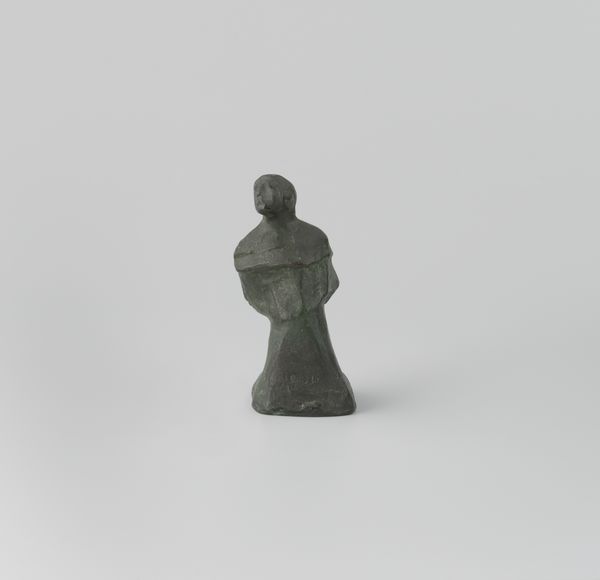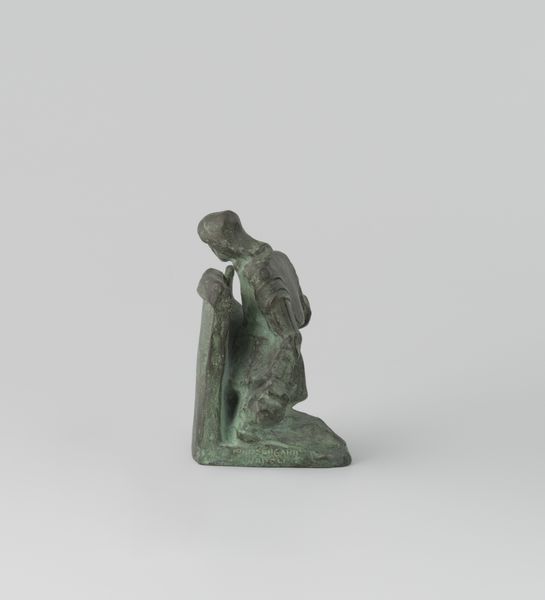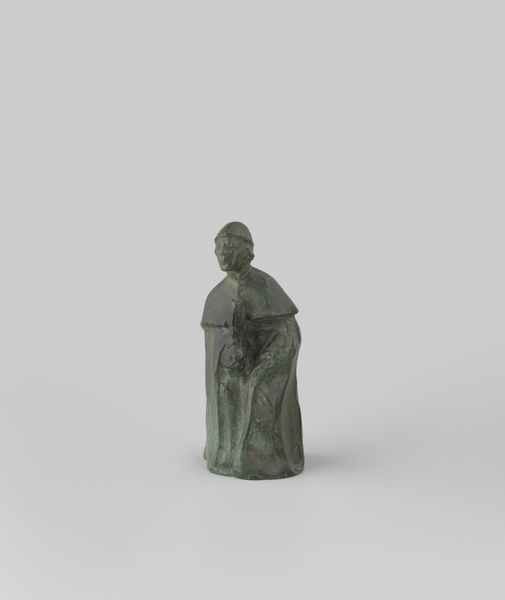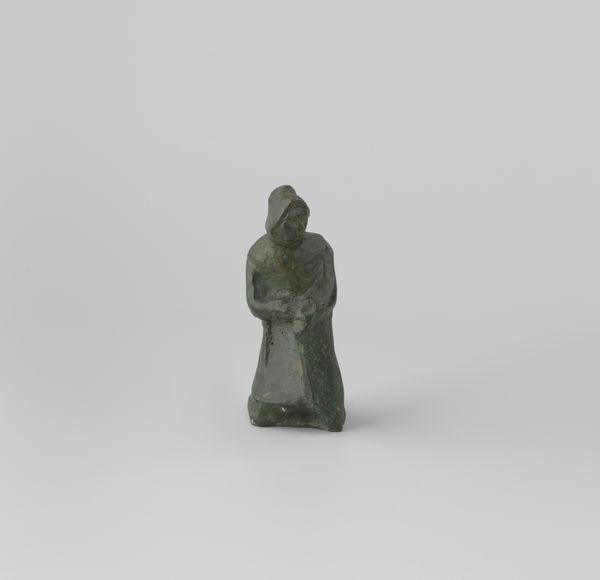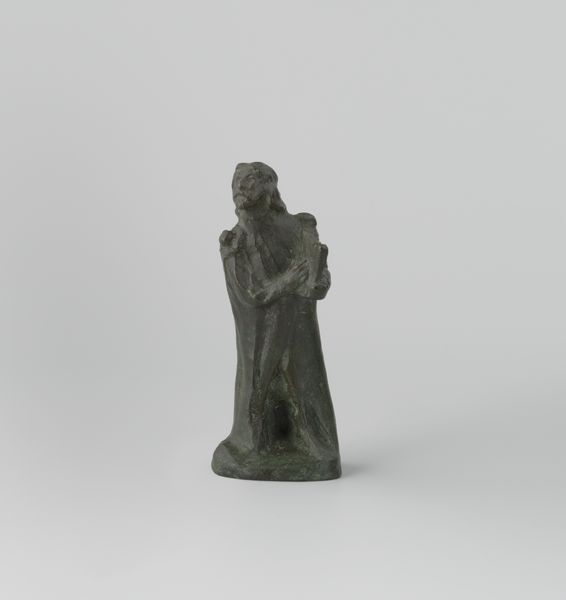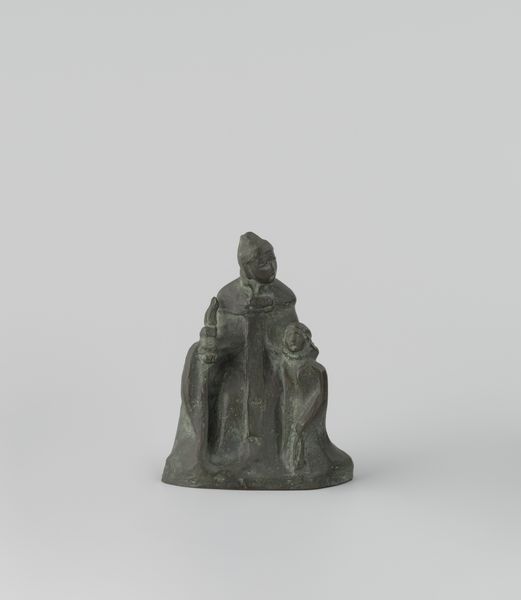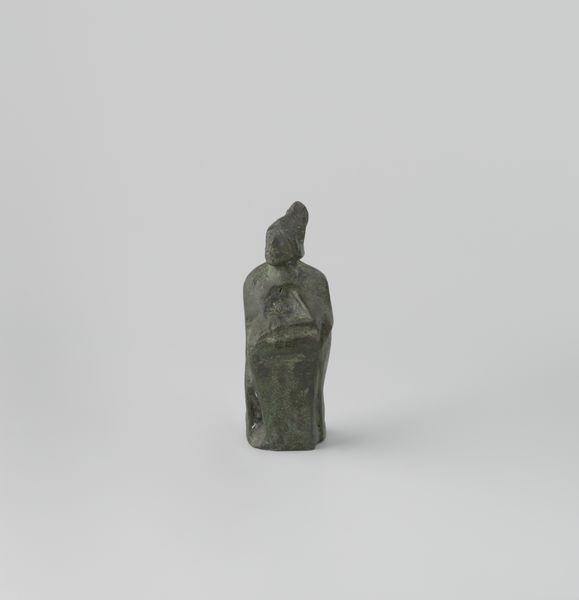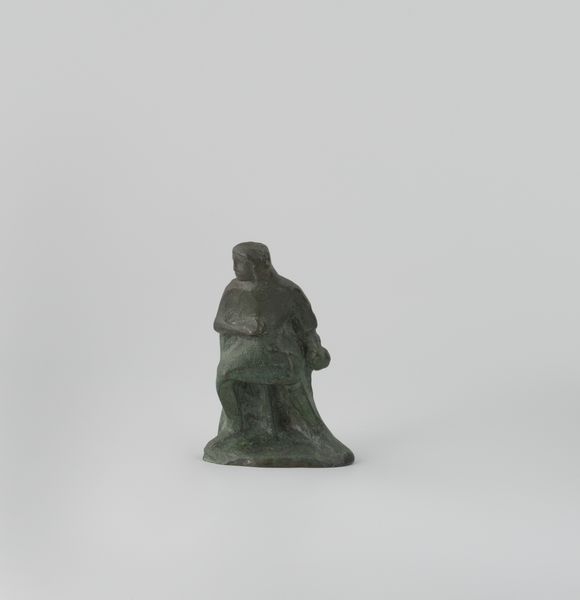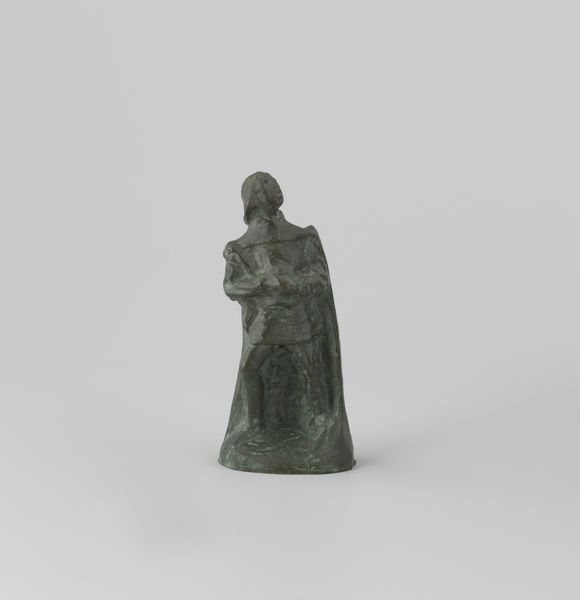
bronze, sculpture
#
portrait
#
bronze
#
figuration
#
sculpture
#
modernism
Copyright: Rijks Museum: Open Domain
Curator: Standing before us is Saar de Swart's "Pion 3," a bronze sculpture created between 1923 and 1925. Editor: There’s a striking simplicity to this figure. The patina gives it such an archaic, grounded feeling. It speaks of resilience and quiet strength to me, despite the figure’s rather small stature. Curator: It does possess a certain primitive quality. Saar de Swart’s modernist style often incorporated these timeless human forms. Consider the almost archaic drape of the robes and how the posture harkens back to depictions of matriarchs, priestesses, and powerful women in preceding millennia. Editor: Yes, and looking at it from a contemporary lens, one has to wonder what Swart's specific intentions were when designing this genderless figure. Who might this "Pion" be within that cultural moment? I wonder if its very ambiguity speaks to shifting understandings of gender roles during the interwar period? Curator: That’s an intriguing perspective. Bronze itself carries such symbolic weight. As a metal, bronze has historically symbolized power, stability, and permanence. Perhaps, de Swart used bronze to capture the unyielding role of womanhood despite the upheaval of those times. This enduring matriarch figure would become particularly crucial after the societal shifts wrought by war and social change. Editor: Absolutely. It also brings to mind ideas around androgyny and the challenging of societal expectations that so many artists engaged with in the early 20th century. Were they breaking molds or, perhaps more subtly, reshaping cultural views on identity, presence, and who gets to take up space? Curator: Perhaps a bit of both. The "Pion," or pawn, chess piece, hints at strategy and societal play where all members move along the stage together. Perhaps its simplicity of shape reinforces an inherent and shared human experience? It also encourages the viewer to bring their interpretation and their own individual meaning to the table, almost a modern every(wo)man. Editor: These objects really hold multiple levels of conversation. It feels powerful to re-engage in that conversation with a historical gaze. Curator: Indeed, exploring those layers is the heart of how an image retains meaning across time.
Comments
No comments
Be the first to comment and join the conversation on the ultimate creative platform.
